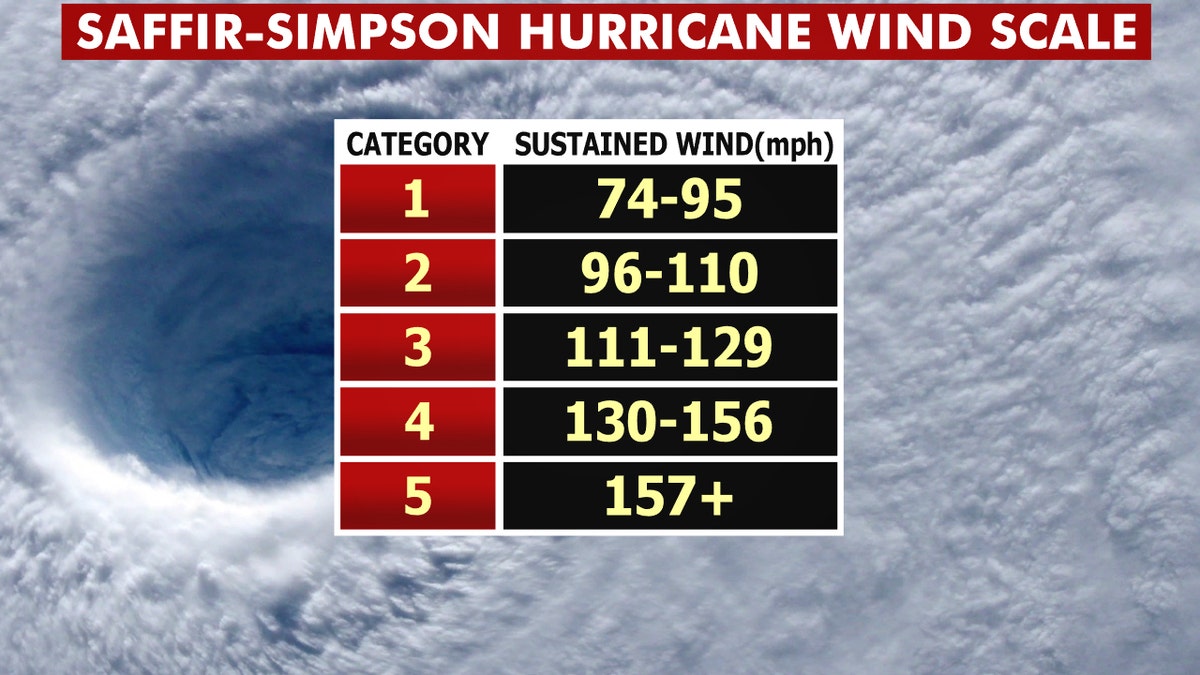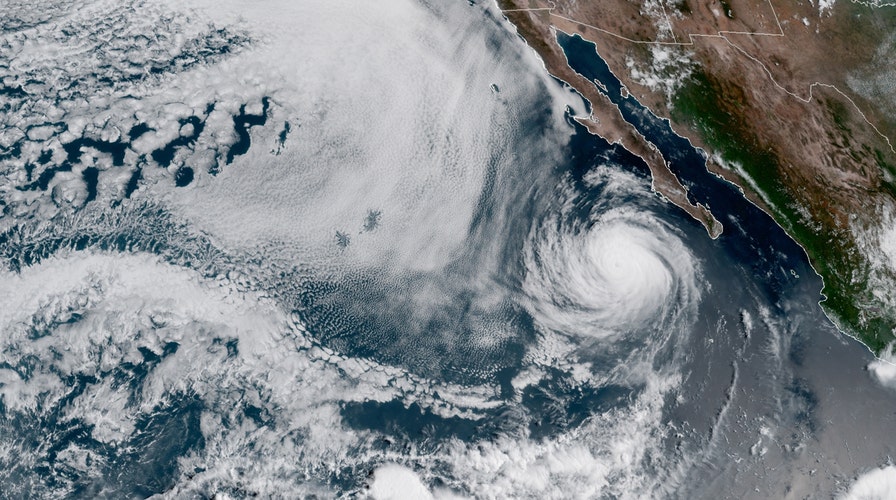NOAA predicts another above-normal hurricane season
The National Oceanic and Atmospheric Administration (NOAA) said there's a 60 percent chance of an above-normal hurricane season this year, calling for a likely range of 13 to 19 named storms.
The second hurricane this season in the Central Pacific strengthened off Mexico's northwestern coast on Tuesday but isn't expected to directly threaten land.
The U.S. National Hurricane Center (NHC) in Miami said that Hurricane Elida now has maximum sustained winds of 100 mph, and is located about 275 miles west-southwest of the southern tip of Baja California.
The storm is moving northwest at 14 mph.
2020 ATLANTIC HURRICANE SEASON HAS BROKEN RECORDS, NOAA NOW SAYS THERE MAY BE MORE STORMS THAN NAMES
"A west-northwestward to northwestward motion with a decrease in forward speed is expected during the next several days," forecasters said in an 11 a.m. EDT advisory.

Hurricane Elida is seen swirling off Mexico's northwestern coast on Tuesday, Aug. 11, 2020. (NOAA/GOES-East)
While the storm is now a Category 2 storm packing winds of 100 mph, forecasters say that Elida won't maintain that in the days ahead.

The Saffir Simpson Scale, which is how hurricane strength is rated. (Fox News)
"Rapid weakening is expected to begin tonight as Elida moves over colder water, and the cyclone is expected to weaken to a tropical storm on Wednesday and degenerate to a remnant low on Thursday," the NHC said.
Hurricane-force winds extend out some 15 miles from the center of the storm, while tropical-storm-force winds extend outward up to 70 miles.
While forecasters say the storm will stay away from land, swells generated by Elida are forecast to impact portions of the coast of west-central Mexico and the southern Baja California peninsula during the next day or two.
NOAA FORECASTING ACTIVE PEAK HURRICANE SEASON WITH UP TO 6 MAJOR STORMS
"These swells are likely to cause life-threatening surf and rip current conditions," forecasters stated.
Federal forecasters said in May that the Central Pacific basin, including Hawaii, should expect to see between two and six tropical storms or hurricanes this year.
Elida is the fifth storm so far this season and the second hurricane, following after Douglas which strengthened into a major hurricane before giving Hawaii a near-miss last month.
Hurricane season in Hawaii lasts from June 1 until the end of November. August and September are historically active months for cyclones in the region.
CLICK HERE FOR MORE WEATHER COVERAGE FROM FOX NEWS
The NHC said Monday that the eastern Pacific is now in a "very active" period, with 3 other systems likely to develop late this week.
Last year, four tropical cyclones developed in the Central Pacific. None directly impacted Hawaii.
CLICK HERE FOR THE FOX NEWS APP
In 2018, the massive and powerful Hurricane Lane made a last-minute turn and narrowly spared Oahu, Hawaii's most populous island. The last major hurricane to strike the state was Hurricane Iniki in 1992, which hit Kauai and caused massive damage across the island.
The Associated Press contributed to this report.


